Look below to find out about our workbooks.
If you are interested in giving Student Studio a go then email info@thinkup.org for a free trial.
Look below to find out about our workbooks.
If you are interested in giving Student Studio a go then email info@thinkup.org for a free trial.
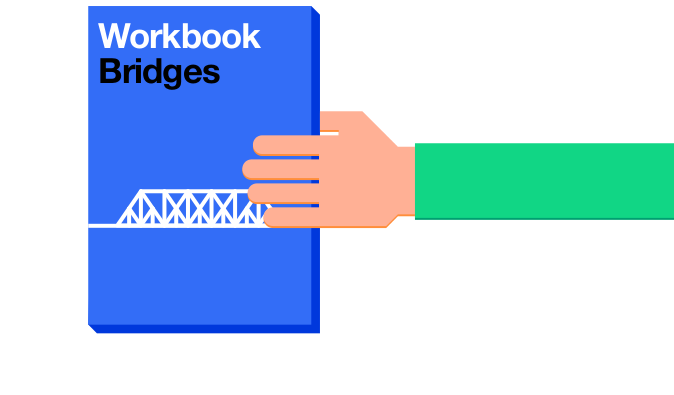
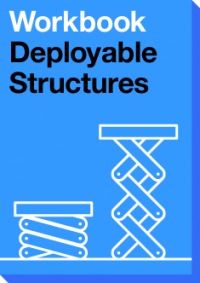
This project is aimed at 14 to 19-year-old students working at or equivalent to KS4/5.
Skills Development
Personal, Learning and Thinking Skills
Communication Skills
Information, Advice and Guidance
This project is designed to give a hands on insight into what it’s like to be a mechanical engineer in a design office. It is an immersive experience where students conduct the realistic projects of an engineer. They will explore their workplace developing their confidence and skills. As part of this project, students will conduct research into different aspects of an engineer’s job, they are specifically asked to interview a member of staff about what path they took to get the job they have now.
Ideally, the student should be able to access information on real projects in your organisation that are relevant to the activities that the students will be doing in this Student Studio project, and the people who have worked on them. If this is not possible then the supporting resources within Student Studio will help to bring sufficient context for the student.
Supervision
Supervisors will need an hour to prepare any supporting resources prior to the student starting and then approximately 1-1.5 hours a day for 1:1 supervision and arranging access to other members of staff.
Supervisors don’t need to have any specific engineering knowledge related to the theme of this Student Studio project; broad understanding of general engineering principles is all that is needed to guide students through this project. Each day Student Studio gives supervisors suggestions on how to guide students through their project and how to set up interesting and exciting activities for them.
Resources
We encourage host organisations, where possible, to make available real resource, resources, such as drawings, reports, calculations, computer models and presentations, to help contextualise this project.
Equipment
Access to a computer with internet access
In this project students will build a working umbrella mechanism. To build it they will require,
IMPORTANT SAFETY NOTICE To make one of these umbrella mechanisms, 12 wooden coffee stirrers will need to be cut in two. This can be done with a craft knife and cutting mat or other suitable equipment. It is recommended that the supervisor cuts the coffee stirrers before the activity begins in order to minimise the risk to students. Whether the teacher or the students cut the coffee stirrers, a risk assessment must be carried out to minimise risk or injury.
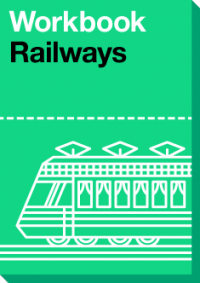
This project is aimed at 14 to 19-year-old students working at or equivalent to KS4/5.
This project would be appropriate for a work experience student who was considering working in railway engineering in future, either via an apprenticeship-level or higher education pathway.
Apprenticeship-specific skills
This project will give students interested in pursuing an apprenticeship pathway into working in railways the opportunity to:
Skills Development
Personal, Learning and Thinking Skills
Communication Skills
Information, Advice and Guidance
This project is designed to give a hands on insight into what it’s like to be an engineer working on the railways. It is an immersive experience where students conduct the realistic projects of an engineer. They will explore their workplace developing their confidence and skills. As part of this project, students will conduct research into different aspects of an engineer’s job, they are specifically asked to interview a member of staff about what path they took to get the job they have now.
Ideally, the student should be able to access information on real projects in your organisation that are relevant to the activities that the students will be doing in this Student Studio project, and the people who have worked on them. If this is not possible then the supporting resources within Student Studio will help to bring sufficient context for the student.
Supervision
Supervisors will need an hour to prepare any supporting resources prior to the student starting and then approximately 1-1.5 hours a day for 1:1 supervision and arranging access to other members of staff.
Supervisors don’t need to have any specific engineering knowledge related to the theme of this Student Studio project; broad understanding of general engineering principles is all that is needed to guide students through this project. Each day Student Studio gives supervisors suggestions on how to guide students through their project and how to set up interesting and exciting activities for them.
Resources
We encourage host organisations, where possible, to make available real resource, resources, such as drawings, reports, calculations, computer models and presentations, to help contextualise this project.
For this project students are encouraged to create an approximate model of overhead railway cables. To achieve this we suggest having ready some or all of the following:
Equipment
All you need is a computer with internet access!
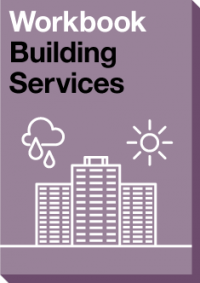
This project is aimed at 14 to 19-year-old students working at or equivalent to KS4/5.
Skills Development
Personal, Learning and Thinking Skills
Communication Skills
Information, Advice and Guidance
This project is designed to give a hands on insight into what it’s like to be a mechanical engineer in a design office. It is an immersive experience where students conduct the realistic projects of an engineer. They will explore their workplace developing their confidence and skills. As part of this project, students will conduct research into different aspects of an engineer’s job, they are specifically asked to interview a member of staff about what path they took to get the job they have now.
Ideally, the student should be able to access information on real projects in your organisation that are relevant to the activities that the students will be doing in this Student Studio project, and the people who have worked on them. If this is not possible then the supporting resources within Student Studio will help to bring sufficient context for the student.
Supervision
Supervisors will need an hour to prepare any supporting resources prior to the student starting and then approximately 1-1.5 hours a day for 1:1 supervision and arranging access to other members of staff.
Supervisors don’t need to have any specific engineering knowledge related to the theme of this Student Studio project; broad understanding of general engineering principles is all that is needed to guide students through this project. Each day Student Studio gives supervisors suggestions on how to guide students through their project and how to set up interesting and exciting activities for them.
Resources
We encourage host organisations, where possible, to make available real resources, such as drawings, reports, calculations, computer models and presentations, to help contextualise this project.
For this project students are encouraged to create a non working model of a heat recovery ventilation unit. To achieve this we suggest having ready some or all of the following:
Equipment
The supervisor and student will require a computer with internet access. It is suggested but not required that a light meter is available (these can be easily downloaded as a free app on most smart phones).
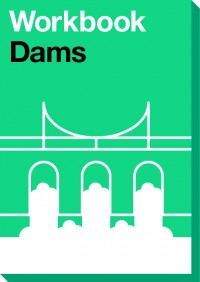
This project is aimed at 14 to 19-year-old students working at or equivalent to KS4/5.
Personal, Learning and Thinking Skills
Communication Skills
Through role play, interviews, written and verbal communication.
Information, Advice and Guidance
This project is designed to help students explore the workplace, giving them the chance to build their confidence, skills and understanding of what is needed to be a civil engineer in a design office. As part of this project, students are specifically asked to interview a member of staff about what path they took to get the job they have now.
It would be beneficial if the student is able to access information on similar real projects within your organisation, and the people who have worked on them, but if this is not possible then there are ranges of supporting resources that students will be able to access from their workbooks.
Supervisors will need an hour to prepare any supporting resources prior to the student starting and then approximately 1-1.5 hours a day for 1:1 supervision and arranging access to other members of staff.
Organisations are encouraged to provide supporting resources such as drawings from a real project, examples of a real desk study or construction sequences which will enable the student to contextualise the project.
All you need is a computer with internet access!

This project is aimed at 14 to 19-year-old students working at or equivalent to KS4/5.
Through independent enquiry – students can explore issues from different perspectives; analyse and evaluate information, judge its relevance and value; and support conclusions, using reasoned arguments and evidence.
Through self-management – students are required to show flexibility when priorities change; work towards goals, showing initiative and perseverance; organize their time; and manage their emotions.
Through reflective learning –by reviewing progress; inviting feedback; evaluating their experiences; and communicating their learning in relevant ways for different audiences.
Through role play, interviews, written and verbal communication.
This project is designed to help students explore the workplace, giving them the chance to build their confidence, skills and understanding of what is needed to be a civil engineer in a design office. As part of this project, students are specifically asked to interview a member of staff about what path they took to get the job they have now.
It would be beneficial if the student is able to access information on similar real projects within your organisation, and the people who have worked on them, but if this is not possible then there are ranges of supporting resources that students will be able to access from their workbooks.
Supervisors will need an hour to prepare any supporting resources prior to the student starting and then approximately 1-1.5 hours a day for 1:1 supervision and arranging access to other members of staff.
Organisations are encouraged to provide supporting resources such as drawings from a real project, examples of a real desk study or construction sequences which will enable the student to contextualise the project.
All you need is a computer with internet access!
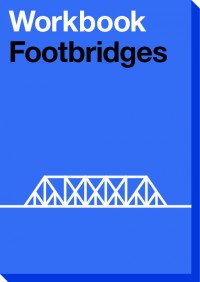
This project is aimed at 14 to 19-year-old students working at or equivalent to KS4/5.
Through independent enquiry – students can explore issues from different perspectives; analyse and evaluate information, judge its relevance and value; and support conclusions, using reasoned arguments and evidence.
Through self-management – students are required to show flexibility when priorities change; work towards goals, showing initiative and perseverance; organize their time; and manage their emotions.
Through reflective learning –by reviewing progress; inviting feedback; evaluating their experiences; and communicating their learning in relevant ways for different audiences.
Through role play, interviews, written and verbal communication.
This project is designed to help students explore the workplace, giving them the chance to build their confidence, skills and understanding of what is needed to be a civil engineer in a design office. As part of this project, students are specifically asked to interview a member of staff about what path they took to get the job they have now.
It would be beneficial if the student is able to access information on similar real projects within your organisation, and the people who have worked on them, but if this is not possible then there are ranges of supporting resources that students will be able to access from their workbooks.
Supervisors will need an hour to prepare any supporting resources prior to the student starting and then approximately 1-1.5 hours a day for 1:1 supervision and arranging access to other members of staff.
Organisations are encouraged to provide supporting resources such as drawings from a real project, examples of a real desk study or construction sequences which will enable the student to contextualise the project.
All you need is a computer with internet access!
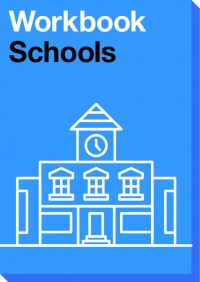
This project is aimed at 14 to 19-year-old students working at or equivalent to KS4/5.
Personal, Learning and Thinking Skills
Through independent enquiry – students can explore issues from different perspectives; analyse and evaluate information, judge its relevance and value; and support conclusions, using reasoned arguments and evidence.
Through self-management – students are required to show flexibility when priorities change; work towards goals, showing initiative and perseverance; organize their time; and manage their emotions.
Through reflective learning –by reviewing progress; inviting feedback; evaluating their experiences; and communicating their learning in relevant ways for different audiences.
Communication Skills
Through interviews, written and verbal communication.
This project is designed to help students explore the workplace, giving them the chance to build their confidence, skills and understanding of what is needed to be a civil engineer in a design office. As part of this project, students are specifically asked to interview a member of staff about what path they took to get the job they have now.
This project is for a student doing work experience with a construction management company at a school construction site. The project is designed for students doing a one-week placement, but could be stretched to last two weeks if necessary.
It is assumed that students will be based in a site office where they are the responsibility of a member of staff who will act as their supervisor. Over four days the student will shadow a different member of the company team: a quantity surveyor, a design manager, a site manager and an engineer. The individuals can be shadowed in any order.
Each day, the student will read a morning briefing that suggests things for them to find out during the day. They will then spend time shadowing a member of the project team. The theme of each day is based around a different stage in the construction. Towards the end of each day, students will spend approximately 2 hours doing desk-based write-up activities.
Students carrying out this project will need access to drawings, site photos and construction documentation related to their host site.
Students working on this project will need
Access to a computer with an Internet connection.
To be able to print documents they download from their Studio.
Access to PowerPoint, or similar presentation software.
Access to a camera (either their own or the company’s) and to be able to upload photos to their computer.

This project is aimed at 14 to 19-year-old students working at or equivalent to KS4/5.
Personal, Learning and Thinking Skills
Through independent enquiry – students can explore issues from different perspectives; analyse and evaluate information, judge its relevance and value; and support conclusions, using reasoned arguments and evidence.
Through self-management – students are required to show flexibility when priorities change; work towards goals, showing initiative and perseverance; organize their time; and manage their emotions.
Through reflective learning –by reviewing progress; inviting feedback; evaluating their experiences; and communicating their learning in relevant ways for different audiences.
Communication Skills
Through interviews, written and verbal communication.
This project is designed to help students explore the workplace, giving them the chance to build their confidence, skills and understanding of what is needed to be a civil engineer in a design office. As part of this project, students are specifically asked to interview a member of staff about what path they took to get the job they have now.
This project is for a student doing work experience with a construction management company at a hospital construction site. The project is designed for students doing a one-week placement, but could be stretched to last two weeks if necessary.
It is assumed that students will be based in a site office where they are the responsibility of a member of staff who will act as their supervisor. Over four days the student will shadow a different member of the company team: a quantity surveyor, a design manager, a site manager and an engineer. The individuals can be shadowed in any order.
Each day, the student will read a morning briefing that suggests things for them to find out during the day. They will then spend time shadowing a member of the project team. The theme of each day is based around a different stage in the construction. Towards the end of each day, students will spend approximately 2 hours doing desk-based write-up activities.
Students carrying out this project will need access to drawings, site photos and construction documentation related to their host site.
Students working on this project will need
Access to a computer with an Internet connection.
To be able to print documents they download from their Studio.
Access to PowerPoint, or similar presentation software.
Access to a camera (either their own or the company’s) and to be able to upload photos to their computer.

This project is aimed at 14 to 19-year-old students working at or equivalent to KS4/5.
Personal, Learning and Thinking Skills
Through independent enquiry – students can explore issues from different perspectives; analyse and evaluate information, judge its relevance and value; and support conclusions, using reasoned arguments and evidence.
Through self-management – students are required to show flexibility when priorities change; work towards goals, showing initiative and perseverance; organize their time; and manage their emotions.
Through reflective learning –by reviewing progress; inviting feedback; evaluating their experiences; and communicating their learning in relevant ways for different audiences.
Communication Skills
Through interviews, written and verbal communication.
This project is designed to help students explore the workplace, giving them the chance to build their confidence, skills and understanding of what is needed to be a civil engineer in a design office. As part of this project, students are specifically asked to interview a member of staff about what path they took to get the job they have now.
This project is for a student doing work experience with a construction management company at an office construction site. The project is designed for students doing a one-week placement, but could be stretched to last two weeks if necessary.
It is assumed that students will be based in a site office where they are the responsibility of a member of staff who will act as their supervisor. Over four days the student will shadow a different member of the company team: a quantity surveyor, a design manager, a site manager and an engineer. The individuals can be shadowed in any order.
Each day, the student will read a morning briefing that suggests things for them to find out during the day. They will then spend time shadowing a member of the project team. The theme of each day is based around a different stage in the construction. Towards the end of each day, students will spend approximately 2 hours doing desk-based write-up activities.
Students carrying out this project will need access to drawings, site photos and construction documentation related to their host site.
Students working on this project will need
Access to a computer with an Internet connection.
To be able to print documents they download from their Studio.
Access to PowerPoint, or similar presentation software.
Access to a camera (either their own or the company’s) and to be able to upload photos to their computer.
Student Studio is designed for a range of abilities so that students can be encouraged to do as much or as little as they feel able to do. The projects can be used in their own right but, as the supervisor notes suggest, it would be beneficial if you were able to enhance the materials provided by providing context specific examples from your own portfolio of work. Find out how you can bring your projects to life here.
Each student will have access to a unique url that they will be able to refer to after they leave your organisation. The url will display the content of their completed project along with any comments made by the supervisor.
Workbooks will remain accessible for a period of 2 years from the date of purchase. Please see our Terms and Conditions.
Once your workbook has been used, even if it is only partially then the workbook cannot be reassigned. If you have assigned the workbook but have not yet used it then we may be able to re-assign the book. Please contact us on info@thinkup.org
This will range from project-to-project and also if you are desk based or out on site. Previous experience tells us that supervisors normally spend 1.5 hours a day with their student.
When you purchase a workbook you will be given immediate access to the site. You will see a Coordinator Homepage which will give you an overview of the progress made by all students using the Student Studio site. And don’t forget that the student needs to complete the workbook to be able to access a download of their report and certificate which they will be keen to do!